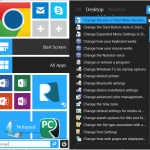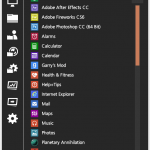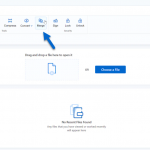В этом последнем Insight реестра Ошибка, пользователей Shell Folders контролировать все настройки для конкретного пользователя, и Registry Reviver гарантирует, эти записи были чистыми.
| По Steve Horton |
|
|
| По Steve Horton |
|
|
Там в стандартный прибор, что Registry Reviver выполняет каждый раз при запуске его, и есть вторичный сканирования, а называется Глубокое сканирование. Глубокое сканирование не включен Registry Reviver по умолчанию, вы должны нажать на кнопку Scan в верхней части, и выберите Deep флажок Scan. Затем выполните сканирование.
| По Steve Horton |
|
|
Когда вы начинаете свой компьютер, несколько программ запускается автоматически. Эти программы созданы для запуска этот путь. Тем не менее, когда программа неправильно удалены, то часто ваш компьютер будет по-прежнему пытаться запустить его при запуске. Это потому, что запись реестра остается в вашем реестре Windows.
| По Steve Horton |
|
|
Ярлыки программы являются файлы на вашем компьютере, которые указывают на другие приложения. Если эти приложения будут удалены некорректно, то ярлык может указывать на нет. Registry Reviver идентифицирует их.
| По Steve Horton |
|
|
Registry Reviver фиксирует пути к DLL, которые были нарушены, когда заявка подается удалить неправильно. Это может привести к синий экран смерти.
| По Steve Horton |
|
|
Файлы справки всплывал, когда вы щелкните Справка в приложении. Они специальные файлы в ОС Windows, которые хранятся отдельно, подальше от приложения. Хотя содержание написана кто выступил с заявлением, интерфейс файл справки является все окна. Помощь файлы могут иметь решающее значение для понимания того, как работает сложная приложение.
| По Steve Horton |
|
|
Шрифт это другое название для конкретного шрифта, который использует ваш компьютер, например, Arial, Helvetica, и так далее. Компьютер полно недействительных записей шрифтов в вашем реестре Windows, без фактического соответствующего шрифтов, установленных, может привести к сбою конкретных приложений.
| По Steve Horton |
|
|
Чтобы понять, типы файлов, вы должны сначала понять, расширения файлов. В последние три-четыре буквы в имени файла после точки, такие как. Документ или. DOCX, представляют расширение файла. Каждое расширение связан с типом файла. В этом случае тип файла документа Microsoft Word. Каждое приложение на вашем компьютере есть список типов файлов, связанных с ним, и ваш реестр Windows есть запись о тех типов файлов.
| По Steve Horton |
|
|
Мы получаем много вопросов о том, что Registry Reviver смотрит на, когда он работает сканирование вашего ПК, и как Registry Reviver классифицирует когда ошибка присутствует. В связи с этими вопросами, мы пишем серию сообщений в блоге, которые описывают все направления вашем компьютере, что Реестр Reviver сканы, и почему эти области важны для здоровья вашего компьютера. Эти статьи, как правило, быть более технический характер, но мы рекомендуем вам задать любые вопросы в комментариях, если вы хотите что-то объяснил.
| По Mark Beare |
|
|
Добро пожаловать в первой части реестра Insights об ошибках!
просмотр по категориям
Видеоблоги
Просмотреть все видео-блоги →Как это
Смотрите все Как это →| most relevant |
| новости и статьи |






